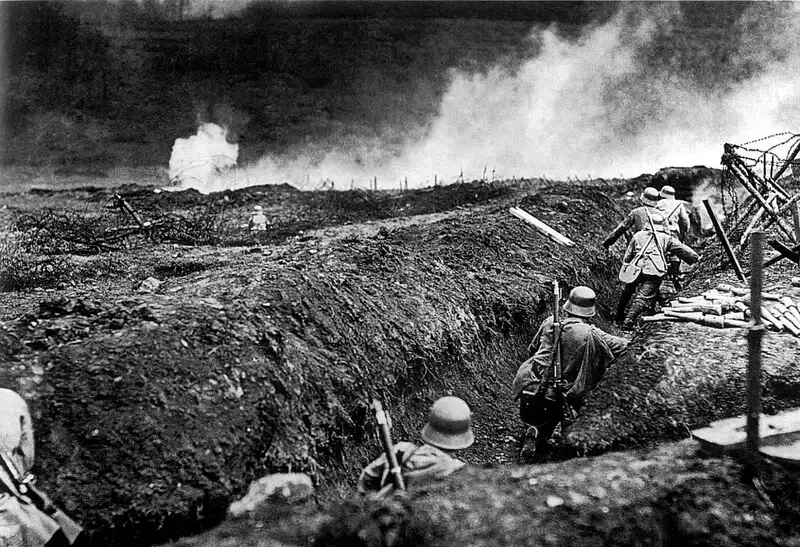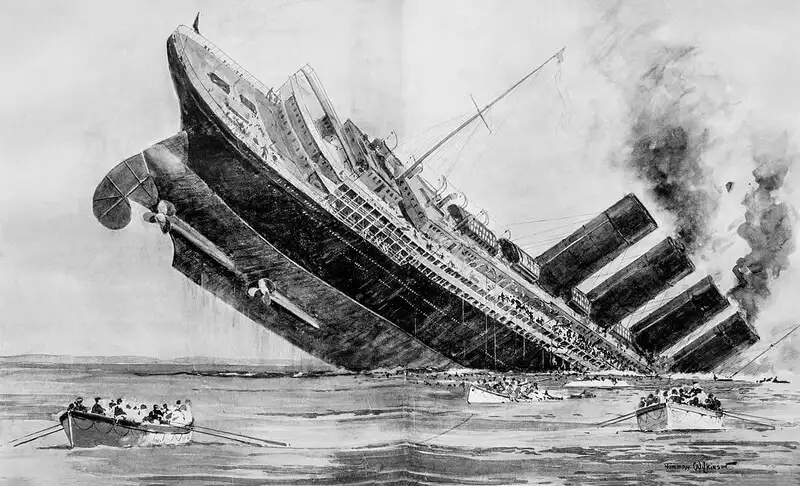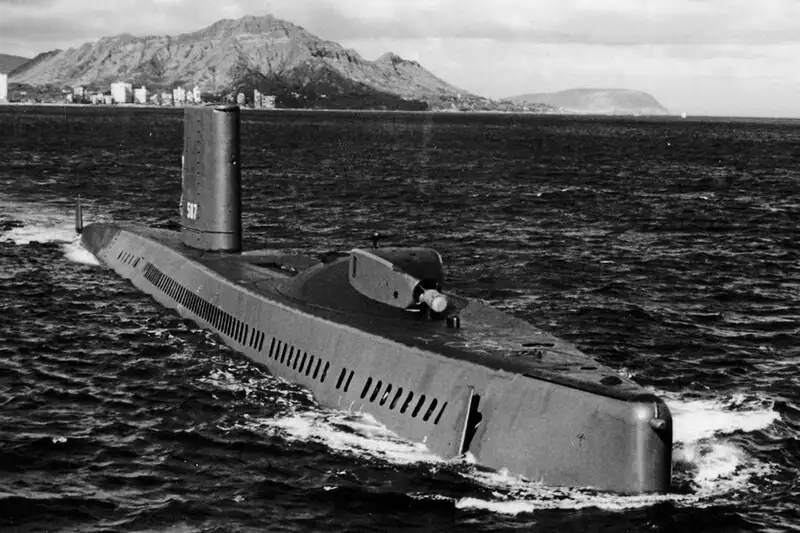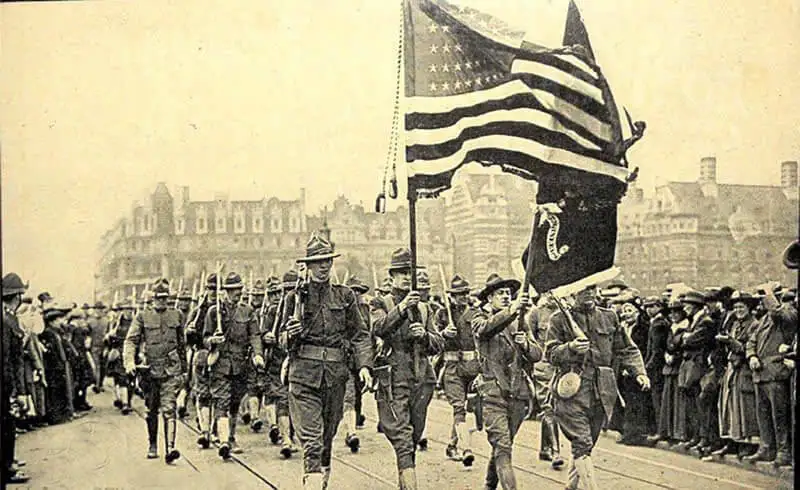When World War I broke out in 1914, President Wilson declared that the United States would remain neutral, a stance widely supported by the American public. However, this position shifted after the German sinking of the Lusitania in 1915, which killed nearly 2,000 people, including 128 Americans. Additionally, the Zimmermann Telegram, revealing a proposed alliance between Germany and Mexico against the U.S., prompted President Wilson to request Congress to declare war on Germany. Join Pywar as we explore the reasons for U.S. involvement in World War I and its consequences.
The Start of World War I
On June 28, 1914, Archduke Franz Ferdinand, heir to the Austro-Hungarian throne, and his wife Sophie were assassinated in Sarajevo, the capital of Austria-Hungary’s Bosnia and Herzegovina province, by a Bosnian Serb nationalist.
Just one month later, on July 28, Austria-Hungary declared war on Serbia. Within a week, Russia, France, Belgium, Britain, and Serbia had aligned against Austria-Hungary and Germany, igniting the conflict initially known as the Great War, later called World War I.

- Trenches in World War I. (Source: Collected)
The Central Powers
Germany and Austria-Hungary later allied with the Ottoman Empire and Bulgaria, collectively known as the Central Powers. Meanwhile, Russia, France, and Britain—the core Allied Powers—gradually gained support from Italy, Japan, Portugal, and several other nations.
On August 4, as World War I erupted across Europe, President Woodrow Wilson proclaimed U.S. neutrality, emphasizing that the nation “must be neutral in fact as well as in name during these days that try men’s souls.”
With no core interests at stake, many Americans supported this stance. Furthermore, the U.S. was home to immigrants from nations at war with each other, and Wilson sought to avoid turning this into a divisive domestic issue.
Nevertheless, American companies continued to ship food, raw materials, and weapons to both the Allies and the Central Powers. However, trade with the Central Powers was severely limited by Britain’s naval blockade of Germany. Additionally, U.S. banks provided loans to warring nations, with the majority going to the Allies.

- The Central Powers in World War I. (Source: Collected)
> You May Be Interested In: World War II: From the Western Front to the Pacific
The Sinking of the Lusitania
On May 7, 1915, a German submarine sank the British ocean liner Lusitania, killing nearly 1,200 people, including 128 Americans. This event strained diplomatic relations between Washington and Berlin and turned American public opinion against Germany.
President Wilson demanded that Germany cease unannounced submarine attacks; however, he did not believe the U.S. should take military action against Germany.
Some Americans disagreed with this non-interventionist policy, including former President Theodore Roosevelt. He criticized Wilson, called for U.S. entry into the war, and championed the Preparedness Movement to convince the nation of the need to prepare for conflict.

- The sinking of the Lusitania by a German submarine in 1915. (Source: Collected)
‘America First’
In 1916, as U.S. troops were deployed to Mexico to pursue rebel leader Pancho Villa following his attack on Columbus, New Mexico, concerns grew about the military’s readiness. In response, President Wilson signed the National Defense Act in June, expanding the Army and National Guard. By August, he signed legislation to significantly strengthen the Navy.
Running on the slogans “He kept us out of war” and “America First,” Wilson won a second term in the White House in November 1916.
Meanwhile, some Americans voluntarily joined the war effort in Europe. From the war’s early months, a group of U.S. citizens enlisted in the French Foreign Legion, including poet Alan Seeger, author of “I Have a Rendezvous with Death”—a favorite of President John F. Kennedy. Seeger died in the war in 1916. Others volunteered with the Lafayette Escadrille in the French Air Force or drove ambulances for the American Field Service.
Resumption of Submarine Warfare
In March 1916, a German U-boat torpedoed the French passenger ship Sussex, killing dozens, including some Americans. Following this incident, the U.S. threatened to sever diplomatic ties with Germany.
In response, Germany issued the Sussex Pledge, promising to halt attacks on passenger and merchant ships without warning. However, on January 31, 1917, Germany abruptly reversed this decision, announcing the resumption of unrestricted submarine warfare. Germany believed this strategy would secure victory before the U.S., unprepared for war, could join the Allies.
In response, the U.S. cut diplomatic ties with Germany on February 3. Throughout February and March, German submarines sank several American merchant ships, causing numerous casualties.

- A German submarine during the unrestricted submarine warfare campaign. (Source: Collected)
The Zimmermann Telegram
In January 1917, Britain intercepted and decoded a coded message from German Foreign Secretary Arthur Zimmermann to the German ambassador in Mexico, Heinrich von Eckhart.
The Zimmermann Telegram proposed an alliance between Germany and Mexico—the U.S.’s southern neighbor—should the U.S. enter the war on the Allied side. Under the deal, Germany would assist Mexico in reclaiming territories lost during the Mexican-American War, including Texas, New Mexico, and Arizona. Germany also urged Mexico to persuade Japan to join its side in the conflict.
The British handed the Zimmermann Telegram to President Wilson on February 24, and on March 1, American newspapers published its contents. Outraged by the telegram and combined with Germany’s renewed submarine warfare, the American public was pushed toward war.
U.S. Declaration of War on Germany
On April 2, 1917, President Wilson addressed a special session of Congress, requesting a declaration of war against Germany with the statement: “The world must be made safe for democracy.”
On April 4, the Senate voted 82-6 in favor of war. Two days later, on April 6, the House passed the war resolution with a vote of 373-50.
Among the dissenters was Representative Jeannette Rankin of Montana, the first woman in Congress. This marked the fourth time Congress had declared war, following the War of 1812, the Mexican-American War, and the Spanish-American War of 1898.
In early 1917, the U.S. military numbered just 133,000. In May, Congress passed the Selective Service Act, reinstating the draft for the first time since the Civil War, resulting in approximately 2.8 million Americans joining the military by the war’s end. An additional 2 million volunteered for the armed forces.
The first American infantrymen arrived in Europe in June 1917; by October, they were engaged in combat in France. In December, the U.S. declared war on Austria-Hungary (it never formally declared war on the Ottoman Empire or Bulgaria).
When the war ended in November 1918 with an Allied victory, over 2 million American troops had fought on the Western Front in Europe, and more than 50,000 had lost their lives.

- American soldiers advancing onto European battlefields in World War I. (Source: Collected)
Conclusion
Through this overview of U.S. entry into World War I, Pywar hopes to have shed light on the events leading to this pivotal decision. From an initial policy of neutrality to the sinking of the Lusitania, the Zimmermann Telegram, and Germany’s submarine warfare, these factors propelled the U.S. into the conflict. With over 4.8 million troops involved, the U.S. shifted the war’s balance and played a major role in the Allied victory. We hope this article provides a comprehensive view of America’s role in World War I.
Check out more articles on war history in the categories World War History and Vietnam War History to stay updated with knowledge and news about conflicts that have shaped the world!
Translated by: Le Tuan
Source: history.com – U.S. Entry Into World War I








